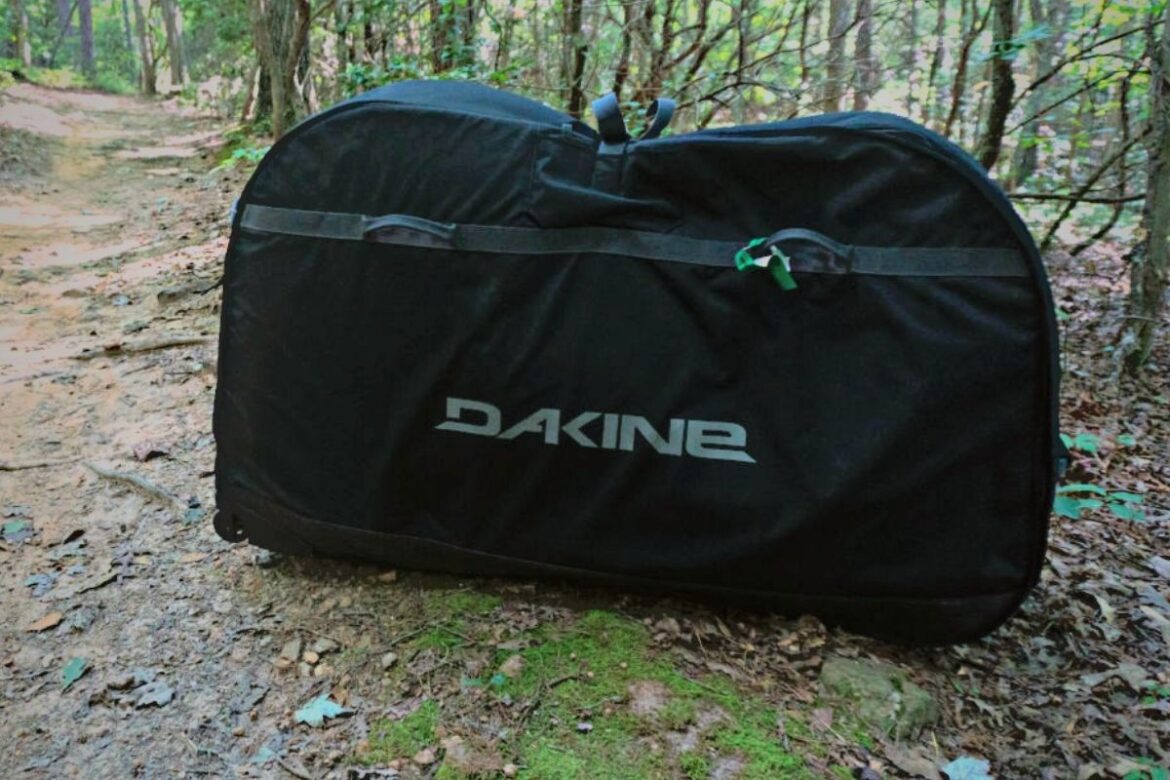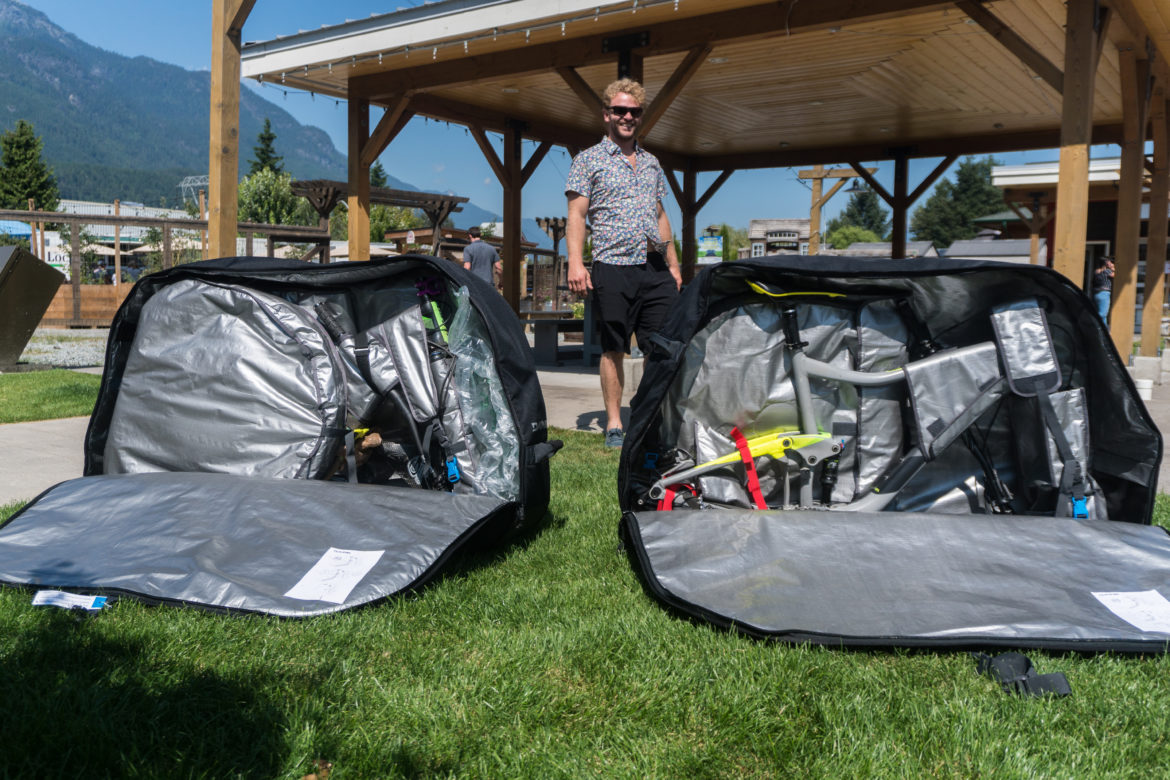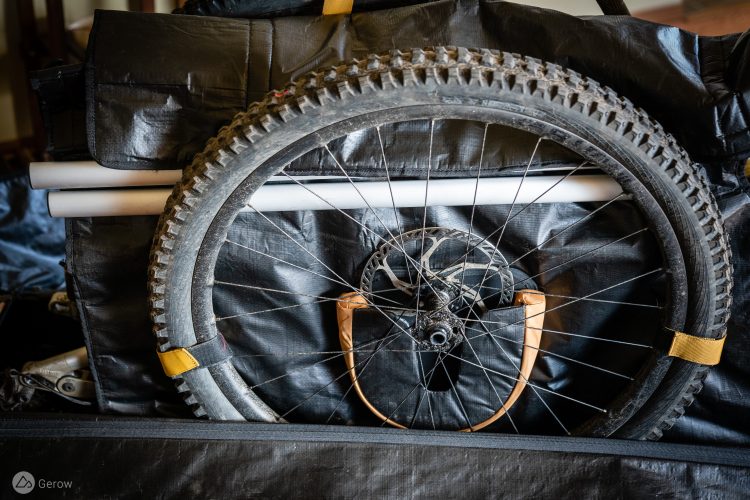
On May 21, 2019, American Airlines announced it was ending its policy of charging oversized baggage fees for certain types of sporting equipment. Spoiler alert: bikes were included, and people rejoiced.
Say what you will about American (people say a lot, and loudly), but it’s the biggest airline in North America whether you’re measuring passengers carried, fleet size, destinations served, or flights per day. If you’re trying to travel, there’s a good chance American Airlines will be taking you there — and with the new baggage policies in effect, there’s a good chance they’ll be taking your bike, too. Many other domestic airlines followed American and dropped bike charges too.
Bike bags under 50 pounds are now eligible for the standard checked bag rate of $30, which is far more reasonable than the previous $150 American was stealing from poor dirt surfers everywhere. To accurately experience this brave new world of air travel with a bike, I decided to bite the bullet for Singletracks readers and venture from Asheville up to Whistler. Selfless, I know. Before I could head out on my pilgrimage to Crankworx, I needed a way to transport my bike. Fortunately, I came upon the Dakine Bike Roller Bag.

The Dakine Bike Roller Bag is a soft-sided case that sacrifices hard-shell armor for a few key benefits. The main advantage is that it weighs in at a feathery 17.75 pounds, which is crucial. If bike and bag can’t make it under American’s 50-pound weight limit, you’re back to paying a medieval $150 to fly your bike.
There is plenty of room in terms of both size and weight for my size large Giant Trance with 27.5″ wheels, but Dakine claims the bag can accommodate XL frame 29ers with ease. The other benefit is that the bag can be folded up to a more manageable size when not in use. Our truck had room for three bike bags folded up (and all the rest of our gear), but rigid cases would have presented a problem.

When you’re ready to travel, all you have to do is remove your bike’s wheels and handlebars and unscrew the rear derailleur from the hanger. You can remove the rotors as well, but I opted not to thanks to the built-in pads in each of the wheel bags.

One wheel goes in the bag first, and then a padded sleeve goes around the fork lowers before the frame is placed inside. The rear triangle is buckled down onto a rigid foam block, and the fork is buckled to the hard plastic bottom of the bag.


A Velcro pad is then wrapped around the top tube and the downtube with an additional flap on the side to secure the handlebars. When everything is in place, the second wheel goes in next to the rear triangle and buckles to the first on the other side.

The system involves quite a few buckles, but they’re color-coded to make everything foolproof. Once everything is properly strapped down, the bike feels very secure inside the bag, and I was confident it could take anything American’s baggage handlers could throw at it. The bag itself is also built to last with smooth, rubberized wheels, a burly zipper, thick stitching, and a comfortable handle.

Now, let’s talk price. At $420 for the Dakine bike roller bag (compare prices), this thing is not cheap. Judging from their sold-out status online, no one seems to mind. Deciding whether this bike bag is worth it for you comes down to a quick assessment and some simple math.
I was headed to British Columbia for 10 days, with riding planned in the North Shore, Squamish, Whistler, and the Sunshine Coast. Assuming bikes are always in stock (they aren’t), rental prices along the way ranged from $60 to $100 per day. If you rent, don’t forget that you’ll need to return the bike within business hours to avoid additional fees — which probably means missing the last three glorious hours of daylight.
On the other hand, paying $420 plus $30 each way to transport my bike would set me back $480, or $48/day. Interesting. Less money to ride my own bike, which I’m a big fan of, and I would also return from the trip with a bag for future adventures. Which means the same itinerary could be repeated next year for a “cost to ride” (CTR) of $6/day. Woah. Now that we’ve framed that $420 price tag in terms of an investment, it looks a lot better. In fact, I would argue that it’s the best money you’ll spend on biking all year.
- Price: $420
- Available at Competitive Cyclist and other retailers



















